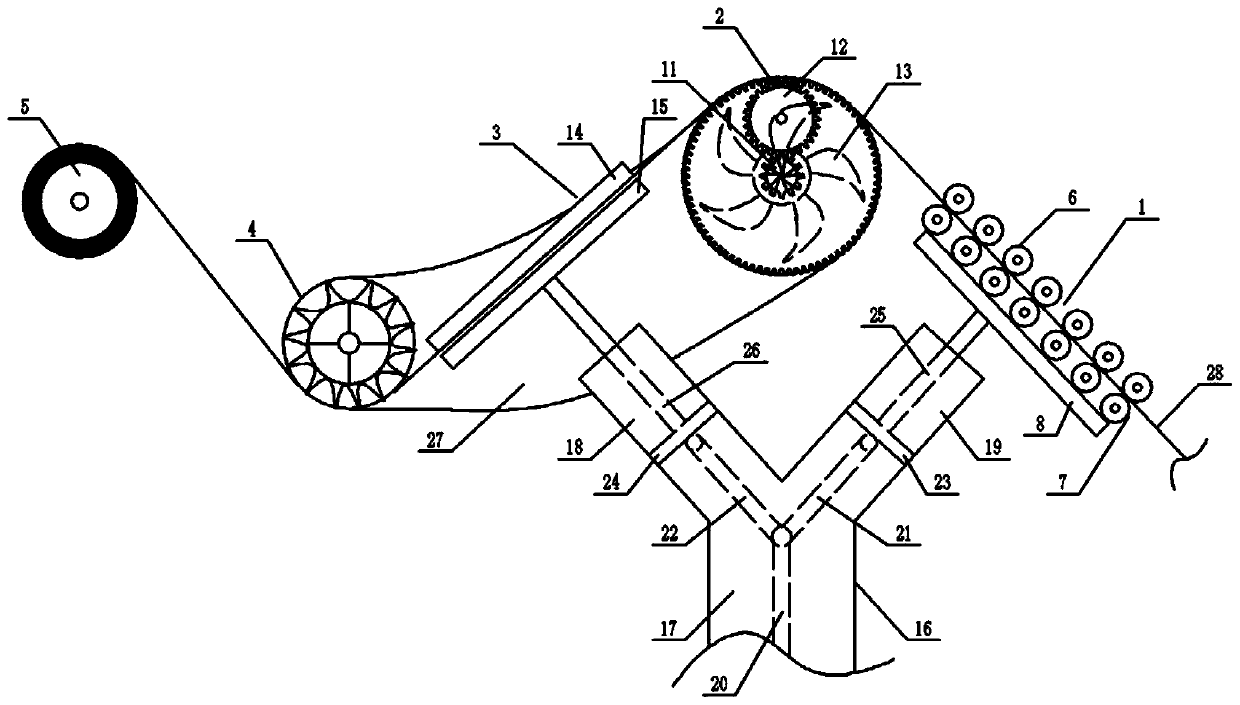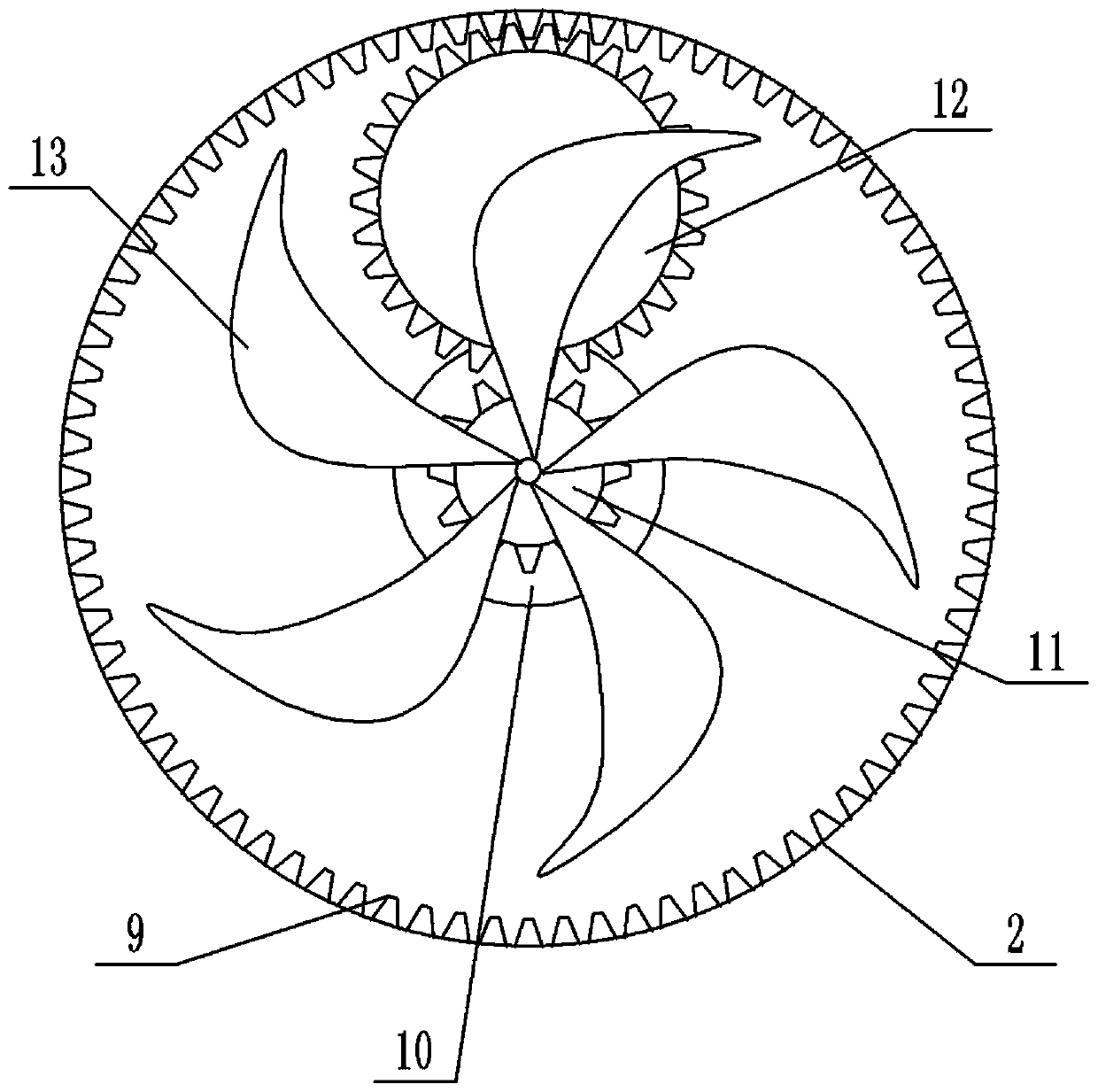Textile Processing Equipment
A processing equipment and textile technology, applied in the field of textile processing, can solve problems such as low processing efficiency
- Summary
- Abstract
- Description
- Claims
- Application Information
AI Technical Summary
Problems solved by technology
Method used
Image
Examples
Embodiment Construction
[0027] Further detailed explanation through specific implementation mode below:
[0028] The reference signs in the drawings of the specification include: wiper mechanism 1, water suction roller 2, ironing mechanism 3, drying roller 4, receiving roller 5, first wiper group 6, second wiper group 7, wiper board 8. Drive tooth 9, planet carrier 10, fixed gear 11, planetary gear 12, negative pressure blade 13, first ironing board 14, second ironing board 15, driving cylinder 16, long section 17, first short section Part 19, second short section 18, drive rod 20, first plunger 21, second plunger 22, first piston 23, second piston 24, first piston rod 25, second piston rod 26, air duct 27. Textiles 28.
[0029] The embodiment of textile processing equipment is basically as attached figure 1 As shown: it includes the frame, and also includes a wiper mechanism 1, a water suction roller 2, an ironing mechanism 3, a drying roller 4, a receiving roller 5, and a first drive for driving ...
PUM
 Login to View More
Login to View More Abstract
Description
Claims
Application Information
 Login to View More
Login to View More - R&D
- Intellectual Property
- Life Sciences
- Materials
- Tech Scout
- Unparalleled Data Quality
- Higher Quality Content
- 60% Fewer Hallucinations
Browse by: Latest US Patents, China's latest patents, Technical Efficacy Thesaurus, Application Domain, Technology Topic, Popular Technical Reports.
© 2025 PatSnap. All rights reserved.Legal|Privacy policy|Modern Slavery Act Transparency Statement|Sitemap|About US| Contact US: help@patsnap.com


